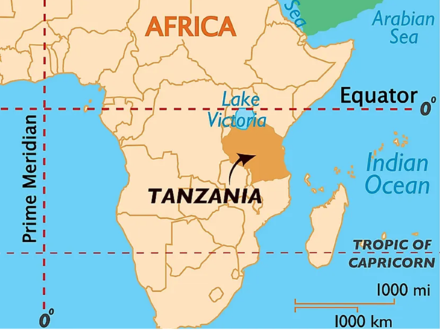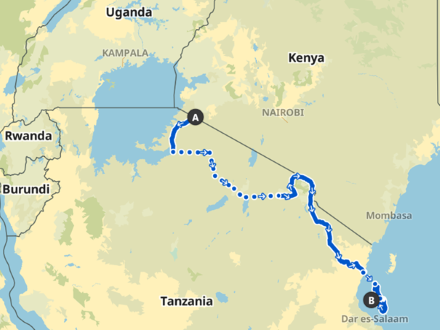
After a four-day safari in Serengeti, our scenic cycle route incorporated Maasai territory as we looped Kilimanjaro and pushed against ferocious wind to the Indian Ocean.
Sirari (border with Kenya) – Bunda – Serengeti Ndabaka Gate (West) … Arusha – Boma Ng’ombe – Matadi – Tarakea – Mwanga – Same – Gonja – Mkomazi – Kirogwe – Muhenza – Pangani
777 km cycled
June 30 – July 25, 2023
Watch the video!
Visa requirements
We were both eligible for the three-month, multi-entry tourist visa available at the border for 50USD per person. Again, a very efficient procedure.

Karibu tena - Welcome again!
Crossing the border back into Tanzania was special in that we were returning to familiar territory, where we knew karibu (welcome) would be on the tips of everyone’s tongues. It was special because a number of top highlights like Serengeti, Kilimanjaro and Zanzibar awaited. However, it was also unique as it marked our last border crossing on this trip.
The ride south led through beautiful hilly outcrop scenery until we hit the plains of Serengeti. Even from the road, we could see the wildebeest and zebras gathering for their annual migration north. The excitement was mounting.



Darina’s brother Enda and his girlfriend, Catherine, were waiting for us at the Western Ndabaka Gate of Serengeti National Park, where we loaded the bikes on the roof of a jeep and enjoyed a safari all the way to Arusha!


Safari
Our four-day safari with Enda and Catherine covered a lot ground, crossing three national parks/conservation areas en route to Arusha: Serengeti NP, Ngorongoro Crater, and Lake Manyara. The beauty of the Serengeti Plains is hard to beat and the wildlfe didn’t disappoint either.
The word is out though, and July is when the world descends on Serengeti and surrounds. It was a little shock to the system after having explored numerous smaller national parks off-season during the year.











Arusha
The Tanzanite Experience is one of the to-do activities in this tourist centre, where visitors learn all about Tanzania’s local precious stone, graded according to colour, clarity, cut and carat weight. What makes this gemstone unique is that it is only found in one spot in the world: At the foothills of Kilimanjaro in Maasai country!
We enjoyed the wide variety of dishes available in top restaurants and sent Enda and Catherine off on their merry little way to chill for a few days on Zanzibar before returning home.

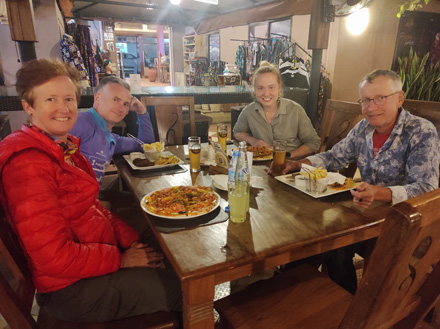
The Roof of Africa
Our best view of Kilimanjaro was from the west. As we bade farewell to Arusha and Mt Meru, it wasn’t long before Africa’s highest mountain was dominating the horizon. Standing proudly at 5,895masl, this dormant volcano’s snowcapped peak rises majestically from the corn fields, where the Maasai have turned to cultivation.


As the trail hugs the Kenyan border, a wildlife corridor allows animals roam freely from the Amboseli National Park across the border. And let there be no mistake … they certainly use it! As we cycled through, what did we pass sprawled out in the shade of the bushes… but a lion! Yes, a lion! After her last experience coming eyeball to eyeball with a lion in Katavi NP, Darina resisted all temptation to snap a quick selfie. It was uphill after all and Kurt had already been nagging that her average speed was at an all-time low that day!


Eucalypt and pine forests followed between areas of lush tropical vegetation where black and white bushy tails dangling in the trees did little to camouflage numerous adorable black-faced colobus monkeys. The markets were colourful affairs, and if it weren’t for the repeated incidents of stone and stick-throwing kids, it would have been a very pleasant ride.


So near and yet so far!
Zanzibar was getting closer and closer. Kurt had that Final-Destination Syndrome real bad and the seasonal South-Easterly Kusi wind was not making our advance any easier. We turned off the main road, hoping the wind might be channelled differently closer to the Pare Mountains. It wasn’t!


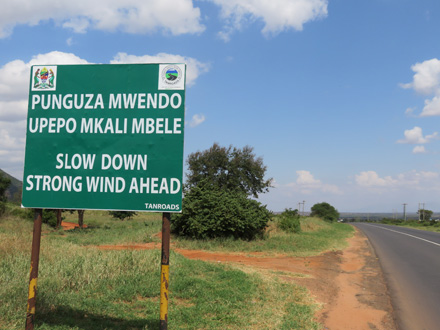
But, we got to cycle along the Mkomazi National Park and excite ourselves with various animal tracks on the dirt road we were following. It’s baobab country out there, and traditional log beehives hang from many acacia trees.
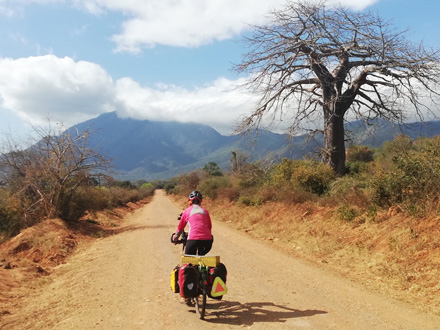

Sisal is also widely grown. Initiated by the German East Africa Company during colonial days (1880s-1919), its fibre is used for rope, carpet, bag and sack production.



The Maasai, traditionally pastoralists, were out in force herding cattle and goats, and glad of a wee chat and a sup of water with the touring cyclists. The wind howled and the gravel track deteriorated. Zanzibar was becoming more elusive with every pedal stroke.


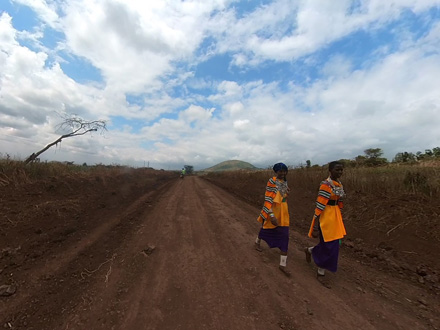
Road signs in Tanzania
Throughout Tanzania, we came across road signs reminding motorists of deaf and blind pedestrians, especially in areas where there were training institutions for the disabled. What was prevalent on this stretch was a pedestrian sporting a bowler hat and carrying an umbrella.
No one could tell us what it meant and so, Darina concluded there must be some British retirees living locally! Google was more on the ball. It is actually warning drivers to beware of albinos, who typically have impaired sight and wear a hat or carry an umbrella for sun protection. Perhaps more should be invested into educating motorists about the meaning of such signs.


Last leg on the mainland
As luck would have it, the wind died down, the dirt tracks were that “good” kind, and the gradient was in our favour. Leaving the mountains behind, palm trees appeared, while oranges and mangos dominated the fruit stalls.



The end is in sight!
The kilometer count edged towards 15,000km, and a wild Indian Ocean lay ahead. Our 12-month trip through 15 countries was drawing to a close. And despite the rain and muddy mess that greeted us in Pangani, that smile was back on Kurt’s face. The beach boy was ready for a holiday!



Overlanders
While we didn’t bump into any cyclists on this leg, our paths did cross with Braam (@the.unseen.us) biking from Cape Town to Lisbon; and Maricha and Butch (@honey_badger_on_tour) on a grand Africa tour with their motor home: Honey Badger. There is something about meeting other overlanders. We instantly connect and could ramble on for hours on end. Add the fact that these wonderful people are all South African (the winners of our hospitality award) and a fun time is guaranteed!

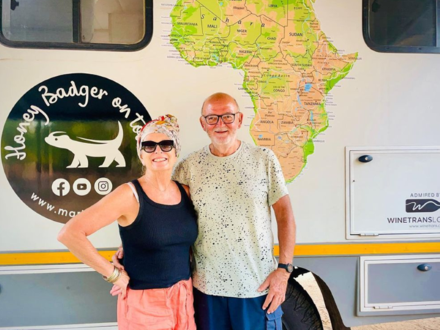
Food
A typical roadside breakfast was mandazi (African donuts) or beans and chapati served with very sweet masala tea. At lunch we were happy with rice, veg, beans and chicken, fish, goat or “cow”. For snacks, samosas and chipsi mayai (potato chip omelette) were widely available. Arusha was a step ahead, with all sorts of creative stir-fries and salads on offer to cater for the tourist influx en route to the national parks.
Breakfasts at the market or roadside foodstalls generally set us back between 2,000 and 3,000 Shilling (0.75-1.20 €), while main courses ranged from 3,000-20,000 Shilling (0.75 – 8€) depending on location.
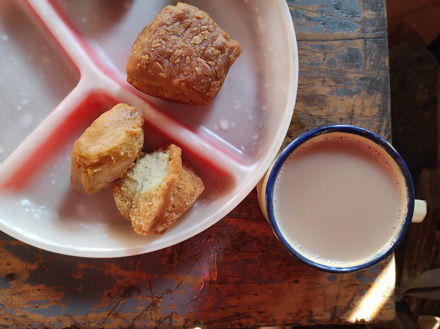



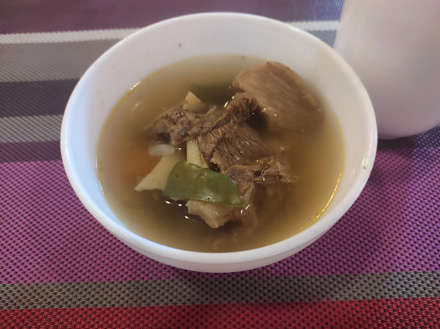
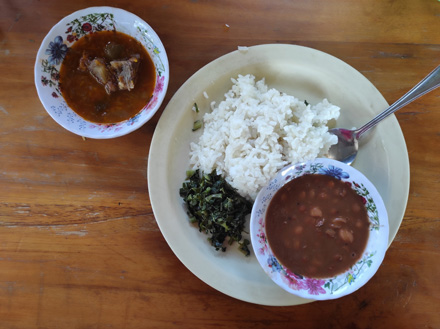
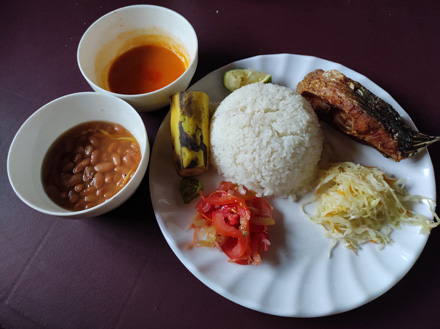

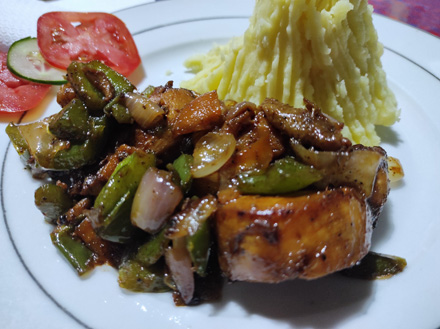

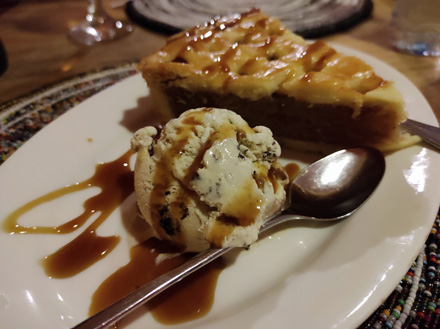
Accommodation
We had our cheapest room of the whole trip on this stretch: A room en suite for 7,000 Tanzanian Schillings (€2.50)! It’s hard to justify pitching the tent, when you can get a room at this price. A pretty standard price for a more luxurious room was 40,000 TZS (15 €).
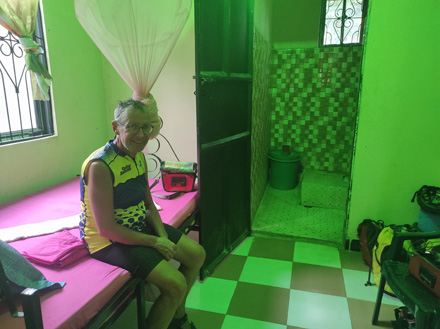

The verdict!
This stretch of Tanzania certainly delivered on the highlight front, and outside the main tourist areas karibu was a daily chorus. However, the south-easterly headwind proved to be a proper challenge, making Zanzibar all the more appealing! The very last leg of the trip is coming real soon!

